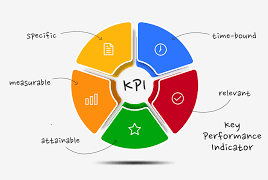For brick-and-mortar businesses, tracking the right Key Performance Indicators (KPIs) is crucial for success. Unlike online businesses, physical stores must measure various factors, including foot traffic, sales performance, customer satisfaction, and operational efficiency. By monitoring these KPIs, business owners can make data-driven decisions to enhance customer experience, optimize inventory, and increase profitability.
This article provides a comprehensive overview of the most important KPIs for brick-and-mortar businesses, explaining their significance and how to track them effectively.
1. Sales and Revenue KPIs
1.1 Total Revenue
- Definition: The total income generated from sales within a given period.
- Why It’s Important: This is a fundamental metric that reflects overall business health and performance.
- How to Track: Use Point of Sale (POS) systems and financial reports to monitor revenue trends.
- Definition: Total sales revenue divided by the store’s total square footage.
- Why It’s Important: Helps assess how efficiently the store utilizes its space to generate revenue.
- Formula:
1.3 Average Transaction Value (ATV)
- Definition: The average amount a customer spends per transaction.
- Why It’s Important: Helps determine customer purchasing behavior and guides pricing strategies.
- Formula:
1.4 Conversion Rate
- Definition: The percentage of store visitors who make a purchase.
- Why It’s Important: Indicates how well the store turns foot traffic into sales.
- Formula:
2. Customer Experience and Engagement KPIs
- Definition: The number of people who enter the store within a given time frame.
- Why It’s Important: Affects sales potential and helps determine peak shopping hours.
- How to Track: Use in-store traffic counters or security cameras with analytics.
2.2 Customer Retention Rate
- Definition: The percentage of customers who return to make another purchase.
- Why It’s Important: Higher retention rates indicate customer loyalty and brand strength.
- Formula:
2.3 Net Promoter Score (NPS)
- Definition: A measure of customer satisfaction based on how likely they are to recommend the store.
- How to Track: Conduct surveys asking customers to rate their likelihood of recommending the store on a scale of 0 to 10.
3. Inventory and Supply Chain KPIs
3.1 Inventory Turnover Rate
- Definition: The rate at which inventory is sold and replaced over a specific period.
- Why It’s Important: High turnover rates indicate efficient inventory management, while low rates suggest overstocking or poor sales.
- Formula:
3.2 Sell-Through Rate
- Definition: The percentage of inventory sold compared to the total inventory available.
- Why It’s Important: Helps assess how quickly products move off the shelves.
- Formula:
3.3 Shrinkage Rate
- Definition: The percentage of inventory lost due to theft, damage, or administrative errors.
- Why It’s Important: High shrinkage rates can significantly impact profitability.
- Formula:
4. Employee Performance KPIs
4.1 Sales per Employee
- Definition: Measures each employee’s contribution to total sales.
- Formula:
4.2 Employee Turnover Rate
- Definition: The percentage of employees who leave and need to be replaced.
- Formula:
4.3 Labor Cost as a Percentage of Sales
- Definition: Measures how much of the revenue is spent on wages.
- Formula:
5. Marketing and Advertising KPIs
5.1 Return on Marketing Investment (ROMI)
- Definition: Measures the effectiveness of marketing campaigns.
- Formula:
5.2 Customer Acquisition Cost (CAC)
- Definition: The cost associated with acquiring a new customer.
- Formula:
5.3 Social Media Engagement Rate
- Definition: Measures interactions with social media content, including likes, comments, and shares.
- Why It’s Important: Indicates brand awareness and customer interest.
- Formula:
6. Financial Health KPIs
6.1 Gross Profit Margin
- Definition: Indicates profitability after deducting the cost of goods sold.
- Formula:
6.2 Net Profit Margin
- Definition: Measures overall profitability after all expenses.
- Formula:
6.3 Cash Flow
- Definition: The amount of cash flowing in and out of the business.
- Why It’s Important: Ensures operational liquidity and stability.
- How to Track: Use accounting software to monitor inflows and outflows.
7. Customer Service KPIs
7.1 Average Resolution Time
- Definition: The average time taken to resolve customer complaints or inquiries.
- Formula:
7.2 Customer Satisfaction Score (CSAT)
- Definition: Measures customer satisfaction with a particular service or experience.
- Formula:
Conclusion
Monitoring KPIs is essential for brick-and-mortar businesses to optimize operations, improve customer satisfaction, and drive profitability. By consistently tracking and analyzing these metrics, business owners can make informed decisions, identify areas for improvement, and create strategies for sustainable growth.
Understanding which KPIs matter most to your business model will help you stay competitive, enhance efficiency, and ultimately increase revenue.
